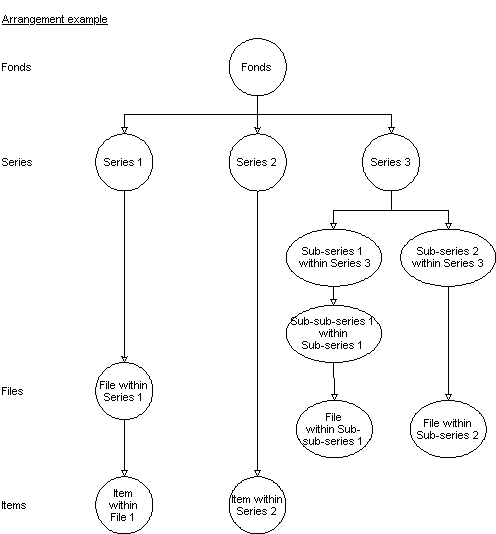This page is intended as an aid to researchers to better comprehend how SFU Archives' finding aids work.
The SFU Archives acquires and preserves records of long-term value created by the university and by private individuals and organizations. Archival finding aids provide descriptions of these holdings. The purpose of the finding aid is to communicate to researchers what records we have acquired, who created the records and in what context, and the nature and scope of the material. This should enable researchers to determine whether particular holdings are relevant to their research and thus warrant a visit to the Archives to consult the original records in person.
As descriptions, finding aids do not typically include copies of the actual original records themselves. The vast bulk of our analog holdings have not been digitized and must be consulted onsite in the Archives reading rooms. With the launch of SFU Atom in June 2014, however, we now have the ability to link descriptions directly to digital copies of the records where available. Over time, we aim to expand the scope of digital materials available.
Archival fonds
Archival materials are the documentary remains generated by the activities of people and organizations. They are organized into separate groupings based on provenance – that is, the person, family or organization that accumulated the documents in the course of their everyday activities and functions. These groupings are called fonds.
For university records, a fonds is identified with the university department which maintained the records (e.g. Department of History fonds). For non-university (private) records, a fonds is identified with the organization, family or person who accumulated the records (e.g. East Enders Society fonds, Halpern family fonds, Kate Braid fonds).
Collections
Although the bulk of our holdings (ca 85%) consists of archival fonds, we also acquire collections. A collection is an artificial accumulation of documents brought together for reference purposes to support research into a particular topic, theme or event. A collection typically includes documents of various provenance and often includes publications. Collection titles reflect either the name of the collector or the subject matter of the collection (e.g. Anne Roberts collection; Apiculture collection).
The difference between a fonds and a collection is illustrated in the Archives' holdings relating to Dallas Smythe, a scholar who joined the SFU faculty in 1974 and became the first Chair what would become the School of Communication. The Dallas Smythe fonds consists of the records created by Smythe himself over the course of a lifetime: all the documents he made or received and kept together in his own files, eventually donated to the Archives by his family following his death. The Dallas Smythe collection on the other hand, is a set of documents relating to Smythe and his work that were assembled by one of his students, Thomas Guback).
Formats
Archival materials may exist in any format – for example, textual records, sound recordings, photographs and other graphic materials, moving images (film, video), architectural drawings, databases. The records may physically exist on various media – paper, microform, digital. The bulk of the Archives' holdings are currently in analog format, but in 2013-14 the Archives began a three-year project to build the technical and policy infrastructure to enable us to acquire, preserve and make accessible born-digital archival materials alongside the traditional analog media.
Arrangement and description
Archival arrangement identifies the internal hierarchy of a fonds or collection, organizing it into a number of distinct records series. A series is a grouping of records which is maintained as a unit because of some relationship between the records: e.g. they relate to the same subject or function, they result from the same kind of activity, they share the same form, or they were kept together by the records creator for some other purpose. For example, the Department of History fonds includes the following series: Policies and procedures, Departmental committees, and Course outlines.
Archival description proceeds down the hierarchy of arrangement, from the general to the specific. Information is given at the highest appropriate level and is generally not repeated at lower levels.

File lists are prepared for each series. Below the file, item-level descriptions are typically prepared only for over-sized or non-textual material, such as sound recordings or moving images. Both file and item descriptions typically contain only minimal descriptive information: reference code, title, dates, access status, container.
Numbering system
SFU Archives' numbering system follows the hierarchy of arrangement. Each fonds is assigned a unique fonds number consisting of "F-" + number (e.g. F-174, Mark Winston fonds). Series, sub-series, sub-sub-series, files and items are numbered according to their position in the hierarchy. For example, file number F-174-4-4-3-9 is read as follows:


Navigating the finding aid
When reviewing archival finding aids, users should keep in mind the hierarchical nature of arrangement and description. Navigate up and down the hierarchy to determine the relevance of the records to your research inquiry.
For example, working with the finding aid for the Department of History fonds (F-26), the fonds-level description will give a brief administrative history of the department and an overview of the types of records its created. Under the series description for Course outlines (F-26-6) you will find information about the types of records included in the course files. In order to determine whether outlines exist for a specific course (e.g. HIST 146), you will have to consult the file list.
In SFU Atom the hierarchy is displayed in a "tree view" navigator on the left hand side of the screen. Expand a level description to drill down the hierarchy. You can also get an overview of file and items lists from a fonds or series description: click the "Reports" link on the right hand side of the screen; select "File list" or "Item list"; click "Continue" and follow the prompts. SFU Atom will display the file or items records in a list view.
Page last updated: May 16, 2014
